Freeing comrades-in-arms from NKVD camps and secret police officers. Winning clashes with enemy forces that are many times more numerous. Or finally, taking over entire towns. Here are seven actions of the soldiers of the anti-communist underground that each of us should know.
1. Breaking the prison in Puławy
The action of breaking the Soviet prison in Puławy resembled scenes from the best sensational films. It was commanded by Major Marian Bernaciak pseud. "Orlik", officer of the WiN Association. On April 24, 1945, two Studebackers drove up to the gate of the barbed-walled prison in Puławy. Four Soviet soldiers escorted out of them, escorting six scuffed and dirty "bandits". It was Major "Orlik" and his partisans. At the same time, the rest of the detachment, 34 soldiers, secretly surrounded the prison building.
During the conversation with the guards, an NKVD officer appeared, who scent the trick and tried to reach for a gun. Didin't make it. "Orlik" put him down with one shot the rest were disarmed. The Poles, not bothering with the security officers barricaded on the first floor, were releasing the prisoners one by one.
During the retreat, Cadet Corporal Stanisław Szymański pseud. "Needle", standing on the fender of a truck in the uniform of a Soviet major, shouted: Tawariszczi! The poles of our beats! He made such a confusion that when the Soviet relief finally arrived, it shot at the barricaded security officers!
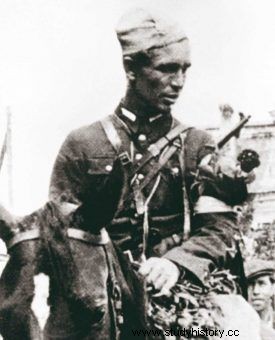
Marian Bernaciak, ps. "Orlik" (photo:public domain).
The success of the action was huge. 107 prisoners were released, the losses of the "Orlik" unit amounted to two killed and the same number injured. Five communist security officers and two policemen were killed, five others were injured.
2. Break-up of the NKVD camp in Rembertów
A similar operation, but on a much larger scale, took place on the night of May 20-21, 1945 in the NKVD camp in Rembertów. It existed from autumn 1944 and many soldiers and activists of the Polish Underground State, including General Emil August Fieldorf, pseudonym "Nile". The information about his stay in this place was the likely cause of the attack. Unfortunately, as Waldemar Kowalski writes about the "Nile" in his book "Heroes of the pits of death":
March 26 - he was sent deep into the Soviet Union. There was a hope of getting the prisoner back, but the preparations took too long. It was not anticipated that the "Nile" would hit the inhuman land less than three weeks after its capture.
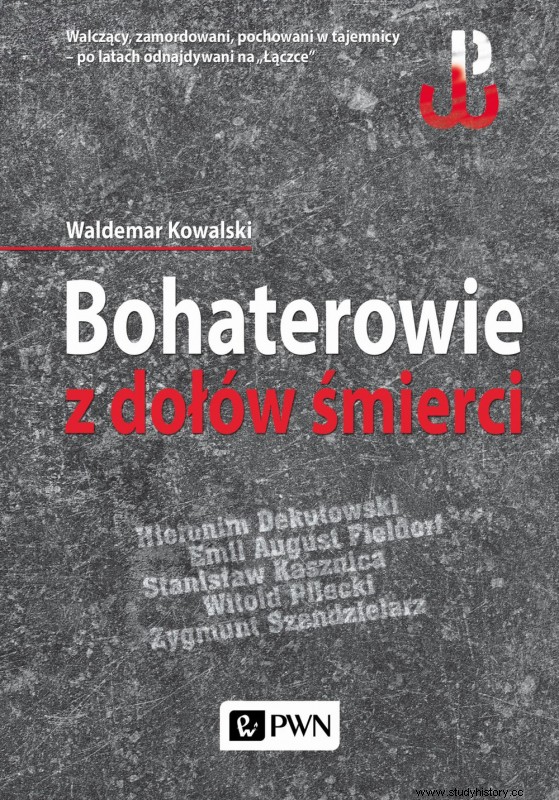
The commander of the operation was a young 21-year-old Home Army officer, Second Lieutenant Edward Wasilewski, pseudonym "Gale". He was in charge of 44 soldiers. Late in the evening, the Poles, divided into four groups, attacked from both sides, breaking the guardhouse at one of the gates and the camp commandant's building. The fight against the Soviets lasted 25 minutes.
We managed to free about two thousand prisoners with losses amounting to only three wounded soldiers! Several dozen NKVD members were also killed in the shootout. In a great manhunt, led with the support of the air force, the Soviets later managed to catch 210 fugitives who were brutally murdered.
3. Battle in the Stockim Forest
The fighting near the village of Las Stocki was probably the biggest battle fought after the war by the troops of the independence underground with the forces of the communist security service. On May 24, 1945, a strong operational group of NKVD, UB, KBW and MO, with a force of about 700 people and supported by 5 armored vehicles, unexpectedly struck a 170-strong unit under the command of the already mentioned Major Marian Bernaciak. Polish partisans found themselves in a trap, the communists slowly pushed them out of the village buildings, which began to burn.
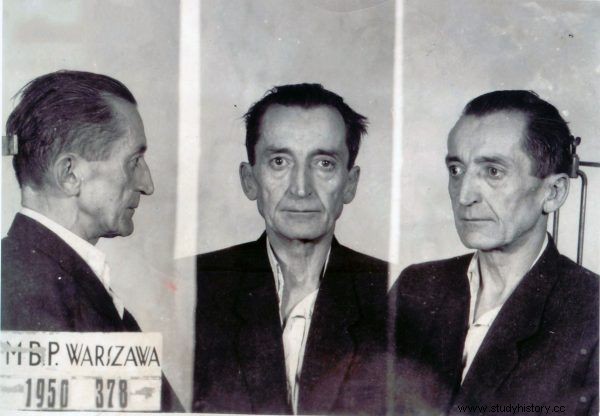
Gen. Emil August Fieldorf ps. "Nil" after his arrest in 1950 (photo:public domain).
It was a coincidence that decided about the victory. The command unit of Major "Orlik", by a twist of fate, came across the staff of the communist operational group. When they heard "Leningrad" when asked for the password, the automatic machines of the Polish partisans rattled.
The communists were literally carried away by fire. The rest, with no command, lost their heads and fell apart. The independence men hunted them until late in the evening. Local peasants helped in finding them. In total, the communists lost 40 to 72 soldiers and 3 armored vehicles while 11 partisans were killed.
4. Attack on the prison in Kielce
It was the loudest operation of this type of armed underground in the Kielce region. It was carried out by a total of about 200 people of post-Home Army partisan units associated with the Delegation of the Armed Forces to Poland. They were commanded by Captain Antoni Heda pseud. "Gray" and Lieutenant Stefan Bembiński pseud. "Harnaś".
The day before the action, an attack on the nearby town of Szydłowiec was simulated. The trick was successful and when partisans were walking towards Kielce, units of the Polish People's Army and the Security Service were scouring the forests near Szydłowiec in search of "reactionaries".
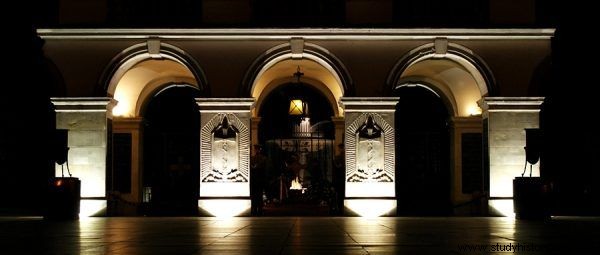
The battle in the Stockim Forest was commemorated at the Tomb of the Unknown Soldier (photo:Bryniakw, CC BY-SA 3.0 PL).
The militants entered Kielce just before midnight on August 4, 1945. They efficiently surrounded the city's critical points and blocked the remaining communist forces. They then successfully stormed the prison, from where they freed 354 inmates among them many officers of the Polish underground. The success of the action was even greater as only one partisan and two other people died.
5. Battle in Miodusy Pokrzywne
The battle between units of the Polish underground and the forces of the NKVD, UB and LWP near the village of Miodusy Pokrzywne is considered one of the greatest defeats of the communist forces in Podlasie. Enkawudziści and policemen leading the pacification activities even had a prosecutor and a judge in their ranks to create the appearance of "law and order".
Waldemar Kowalski quotes in "Heroes from the pits of death" the rules of communist behavior towards Polish villages:
Establish the principle of collective responsibility of the village for crimes committed in its area. Immediately respond to criminal acts:imposing material penalties, confiscating property; mass arrests […]; immediate on-the-spot shooting of those captured with weapons in hand, owners of houses where the weapon was found; in extreme cases, when encountering armed resistance of a village, burning down the village.
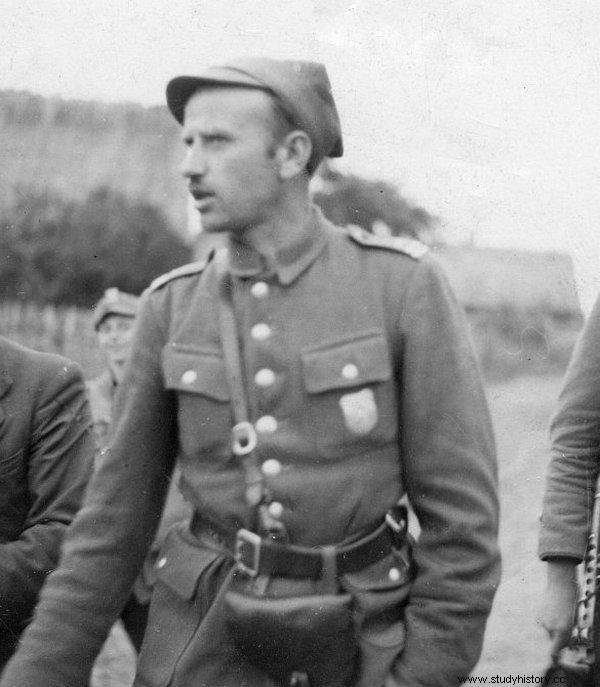
Zygmunt Szendzielarz pseudonym "Łupaszka", the commander of Zygmunt Błażejewicz pseud. "Zygmunt" (photo:public domain).
The inhabitants of the neighboring villages then turned for help to Lieutenant Zygmunt Błażejewicz, pseudonym "Zygmunt" from the 5th Vilnius Brigade. The 1st squadron sent to the rescue together with the unit of second lieutenant Władysław Łukasiuk, pseudonym The "Hammer" numbered about 100 people. The whole was commanded by Lieutenant Błażejewicz. On the night of August 17-18, 1945, partisan forces stood in the quarters in the village of Miodusy Pokrzywne.
In the morning, a warning came that soldiers from the communist task force were approaching. Soon a storm broke out and some of the communist soldiers took refuge in a large barn on the edge of the village. There was then a violent exchange of fire between both sides.
The partisans managed to set the barn on fire, which turned out to be a turning point. Communist soldiers began to surrender, about 50 of them died in the fight, the prosecutor and judge were also liquidated. Eight fighters were killed on the Polish side.
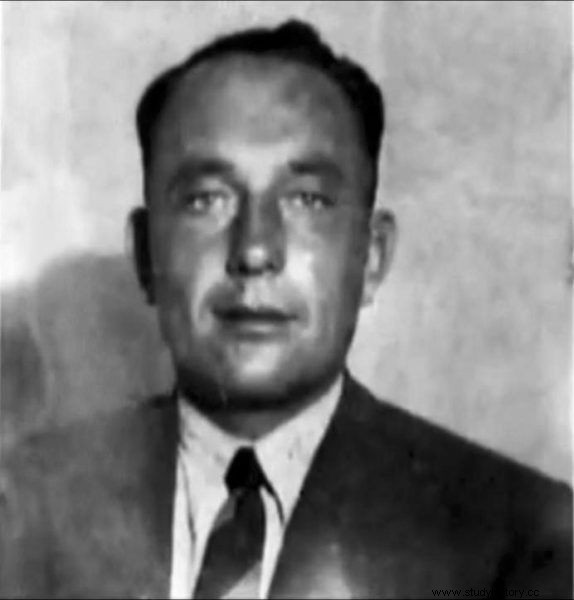
Władysław Łukasiuk pseudonym "Hammer" (photo:public domain).
6. The capture of Hrubieszów
On the night of May 27-28, 1946, soldiers of the Home Army-WiN together with a unit of the Ukrainian Insurgent Army took Hrubieszów. Despite mutual animosities - some Poles lost their relatives in Ukrainian purges - they were joined by a common enemy . Allied forces numbered about 200 people. The Poles were commanded by Lieutenant Kazimierz Witrylak pseud. "Hel", "Druk", Ukrainians Jewhen Sztendera pseud. "Prirwa".
The action went quite smoothly, despite the fact that the UPA did not manage to capture the NKVD barracks and were forced to retreat. However, they tied up large forces of the Soviet security forces in a fight. The Poles, however, captured the building of the Security Office, causing a real panic among functionaries of the communist services. They rushed to flee panically, and the partisans managed to free 20 prisoners and seize the files of the UB.
The local seat of the Polish Workers' Party was also seized, where important documents were also seized and two particularly ferocious "party men" were liquidated. 5 Ukrainians were killed in the battle and 3 were injured, and there was one accidental victim among the Poles. 18 people were killed and injured from the opposite side.

As a curiosity, it should be added that during the attack on the city from the Hrubieszów LWP barracks a rescue was sent in the form of a platoon from the 5th infantry regiment. He was accompanied by Lieutenant Wojciech Jaruzelski, then assistant to the chief of staff of the regiment for reconnaissance . This unit, however, did not establish fire contact with the attackers, despite the fact that it passed through the positions of the guerrilla protection group. Perhaps WiN soldiers simply did not want to shoot their compatriots.
7. Battle of Zwoleń
It was one of the last major battles fought by soldiers of the armed independence underground with the Soviet troops in Poland. On June 15, 1946, a branch of the Armed Conspiracy Union under the command of Włodzimierz Kozłowski pseudonym "Orion" was supposed to strike the arrest of the Security Service in Kozienice.
In order to get the vehicles needed for the action, the partisans set up an ambush on the Radom-Puławy road and stopped there a column of about 30 Soviet trucks. All vehicles were captured during a violent shootout and a dozen or so enemy soldiers died.
Dawna siedziba Powiatowego Urzędu Bezpieczeństwa Publicznego w Kozienicach
On 9 "trophy" vehicles (the rest were burnt), the partisans set off for Kozienice. Half of the 130-strong squad was to capture the MO post and the post office in Zwoleń on the way. This was to break communication with Kozienice.
Meanwhile, the first group, unluckily, stumbled upon a large Soviet detachment a few kilometers outside Zvolen. The Soviets pressed fire to the ground of Poles evacuating in haste from trucks and drove them to the edge of the Kozienicka Forest. The situation of the guerrillas was getting desperate.
Meanwhile, the rest of the "Orion" group had arrived and the two divisions had merged. Their combined forces went into a violent counterattack and with strong fire forced the Soviet soldiers to retreat. 30 of them died and a dozen more were injured. Seven partisans fell from the Polish side. Out of revenge, the activists burned down almost 30 houses and farm buildings in Zvolen and nearby towns.
Buy the book 12% cheaper on the publisher's website

